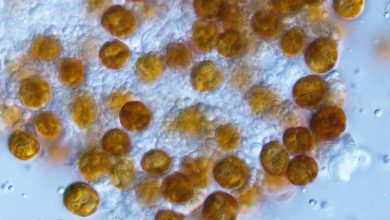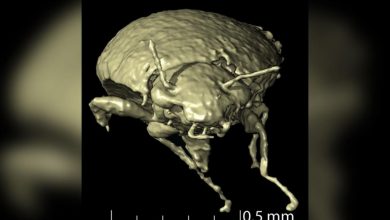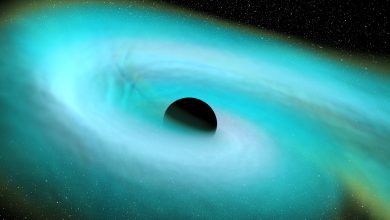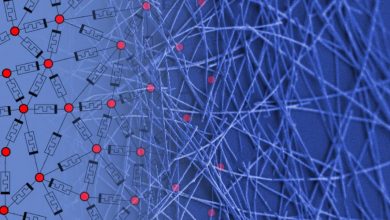Latest Articles
-
Jul- 2021 -4 JulyScience

Scientists Resurrect “Forgotten” Genus of Symbiotic Algae Living in Marine Animals
Featured image: “Yellow cells” of the symbiotic algae, Philozoon collosum, isolated from the soft coral, Capnella gaboensis, collected off the east coast of southern Australia. Credit: Matthew R. Nitschke In the late 1800s, scientists were stumped by the “yellow cells” they were observing within the tissues of certain temperate marine animals, including sea anemones, corals and jellyfish. Were these cells part of the animal or separate organisms? If separate, were they parasites or did they confer a benefit to the host? In a paper published in the journal Nature in 1882, biologist Sir Patrick Geddes of Edinburgh University proffered that…
Read More » -
4 JulyScience Mysteries

New fossilized beetle species discovered in 230 million year old dinosaur poop
You might think fossilized feces are only full of crap, but new research on one specimen has turned up a hidden treasure: a 230-million-year-old, previously undiscovered beetle species. Named Triamyxa coprolithica, the tiny beetles are also the first insects to be described from fossilized feces — or coprolites — and were visible by a scanning method that uses strong X-ray beams, according to a study published Wednesday in the journal Current Biology. Besides the discovery of the beetles in a coprolite, the scientific name also refers to the Triassic period, which lasted from roughly 252 million to 201 million years…
Read More » -
4 JulySpace

Scientists catch 1st glimpse of a black hole swallowing a neutron star
“These were not events where the black holes munched on the neutron stars like the Cookie Monster and flung bits and pieces about,” one physicist said. For the first time, astrophysicists have evidence of not just one, but two black holes obliterating highly dense, incredibly massive neutron stars. First detected in January 2020, the intense gravitational waves produced by these events took roughly one billion years to reach Earth, reports Ashley Strickland for CNN. Both neutron stars and black holes are the results of violent star death. When stars die, depending on their size, they lose mass and become more…
Read More » -
4 JulyEnergy

Experts Predict Wind Energy Costs to Drop Significantly in the Future
Technology and commercial advancements are expected to continue to drive down the cost of wind energy, according to a survey led by Lawrence Berkeley National Laboratory (Berkeley Lab) of the world’s foremost wind power experts. Experts anticipate cost reductions of 17%-35% by 2035 and 37%-49% by 2050, driven by bigger and more efficient turbines, lower capital and operating costs, and other advancements. The findings are described in an article in the journal Nature Energy. Fossil fuel’s share in the energy mix is as high today as ten years ago, despite the falling costs of renewables. With less than a decade…
Read More » -
4 JulyScience-Tech

Nanowire Network at the “Edge of Chaos” Opens Pathway to Artificial Intelligence Discoveries
Functionalities of our brain such as memory and learning are enclosed in the emergent behavior of biological neural circuits composed of ~1014 synaptic connections in between neurons, where the high connectivity of the system provide robustness and adaptability. Emulating brain functionalities represents one of the main challenges of our society, being a milestone for the development of artificial intelligence (AI) and representing not only a logical endpoint for computational neuroscience, but also helping us to understanding how the brain works. Nanowire network trained to solve simple problem mimicking neural pathways. Scientists at the University of Sydney and Japan’s National Institute…
Read More »










